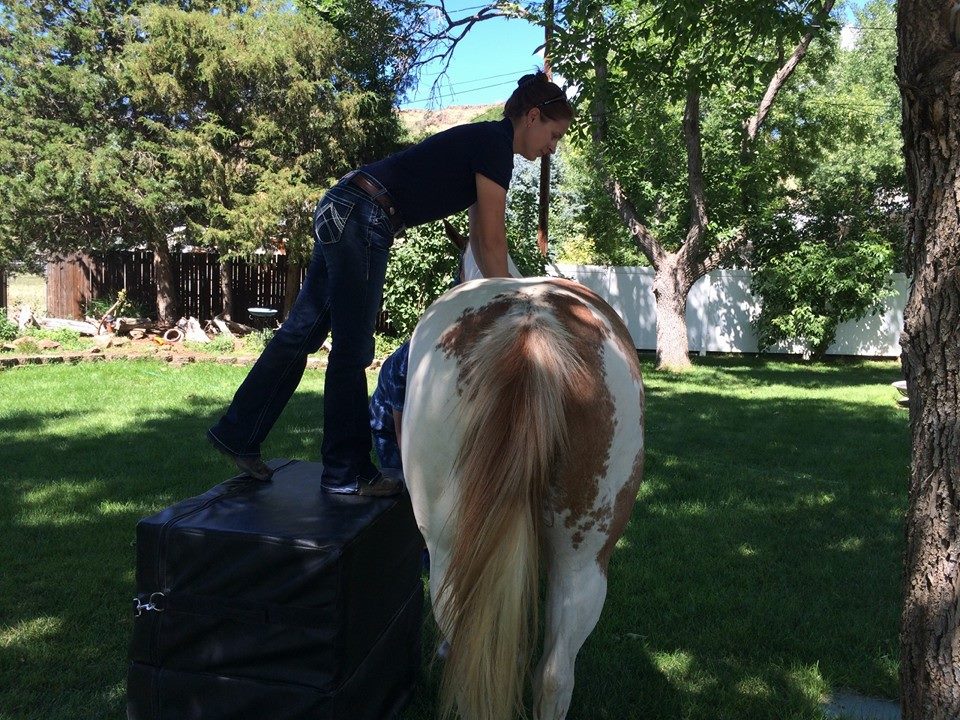Any of you who have watched Dr. Hartman adjust a horse will immediately notice that her approach might not conform to one’s initial expectation. We all have a general idea that a chiropractic adjustment involves a high velocity, low amplitude (HVLA) thrust, but that isn’t the only option available to chiropractic practitioners. What’s best for your horse may be something entirely different.
Is your horse ready for chiropractic adjustment?
Before initiating any chiropractic manipulations, Dr. Hartman begins every appointment with a focus on the musculature and mind of the  horse. It is important for the horse to be mentally present and physically relaxed during the session so that any restrictions within the musculature can be addressed. If we keep in mind that it is the muscles that control the vertebrae of the spine, it immediately becomes evident that these too are a part of the overall chiropractic equation. Without addressing acute and chronic issues with the musculature, the efficacy and duration of therapeutic effects resulting from the chiropractic adjustment may be less than optimal. In severe situations, Dr. Hartman may choose to forgo chiropractic treatment for the day in favor of addressing the muscular pain and restrictions so as not to cause further damage with a HVLA thrust.
horse. It is important for the horse to be mentally present and physically relaxed during the session so that any restrictions within the musculature can be addressed. If we keep in mind that it is the muscles that control the vertebrae of the spine, it immediately becomes evident that these too are a part of the overall chiropractic equation. Without addressing acute and chronic issues with the musculature, the efficacy and duration of therapeutic effects resulting from the chiropractic adjustment may be less than optimal. In severe situations, Dr. Hartman may choose to forgo chiropractic treatment for the day in favor of addressing the muscular pain and restrictions so as not to cause further damage with a HVLA thrust.
What chiropractic method is appropriate for your horse?
Once the musculature supporting the spine is in a malleable state, the timing is now appropriate for chiropractic manipulation. In some situations, a traditional HVLA thrust is appropriate to address any restrictions in the spine. However, over the past few years, Dr. Hartman has worked with her mentor, Dr. Kyla Awes, to incorporate a new technique of adjusting into her system. Keeping in mind that a vertebral motion unit can move in multiple planes, Dr. Hartman can often create a fulcrum with her hand around which she can manipulate the horse’s body. As a result, she can restore motion of the vertebral motion unit in multiple planes with one adjustment. Think of it like the “two birds with one stone” analogy.
Additionally, some horses perceive the HVLA thrust as an aggressive act, especially those that are highly reactive or sore in their musculature. By integrating this new approach into her practice, Dr. Hartman has been able to accommodate the needs of various types of horses from the heavy-boned draft horses to the sensitive Arabians.
Every horse is a unique individual and as such, will benefit from different styles and approaches of chiropractic care. During an appointment, Dr. Hartman will work to identify the primary source of back pain in your horse (ie. Hind limb lameness, poor saddle fit, overriding dorsal spinous processes, nutritional deficiencies, etc). In addition, she will also work with you to develop short and long term plans to keep your horse sound and comfortable. Please don’t hesitate to get in touch with Dr. Hartman to discuss how chiropractic work can help your horse.



